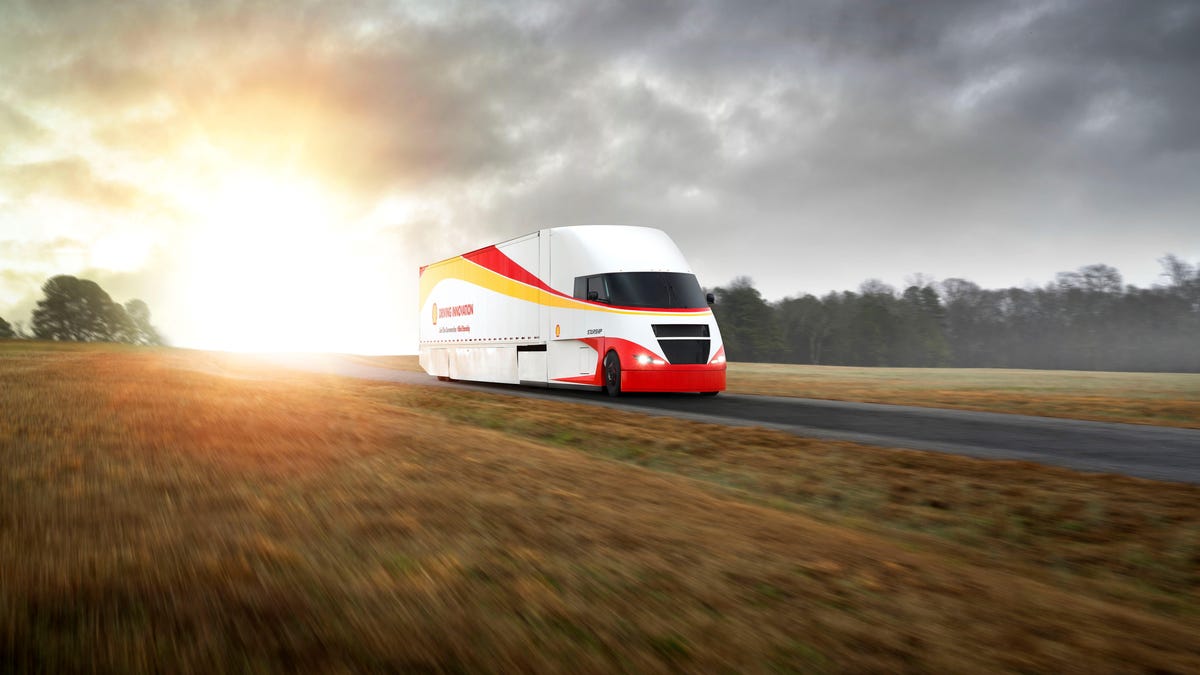Shell's Starship Initiative semi truck looks crazy, is crazy efficient
The high-tech heavy hauler managed to be nearly 40 percent more efficient than an average semi truck despite hauling way more cargo from California to Florida.

Would it sound weird if we told you that Shell (yes, the petrochemical company) is building a starship? Probably. It would probably be less weird if we said that the Starship was actually a hyper-efficient bespoke semi truck that just did a coast-to-coast run from San Diego, California, to Jacksonville, Florida.
To build the Starship, Shell teamed up with the AirFlow truck company to ruthlessly apply all of the best aerodynamic tricks and materials science hacks to the design of the truck in search of something more important to big trucks than simple miles-per-gallon: ton-miles per gallon. A truck's ton-miles per gallon figure compares the vehicle's fuel efficiency with the amount of cargo being carried since that dramatically affects how hard a diesel engine has to work.
Despite looking like something you'd see on a Speed Racer cartoon, the Shell Starship is a real, efficiency truck that just went cross-country.
To help eke out every last drop of efficiency, the Starship's cab is a bespoke shape that is designed to pierce the wind, and it's built from carbon fiber, to help reduce overall weight. The Starship's diesel engine still needs a grille for cooling, but it doesn't need nearly as much airflow in low-load conditions such as maintaining a constant speed on level ground, so the grille has actively controlled shutters that open and closed based on need to maximize aerodynamic efficiency.
One especially interesting aspect of the Starship is its hybrid-electric axle system which can provide a power boost during particularly demanding situations, such as climbing a grade, ensuring that the engine doesn't have to work quite as hard. Speaking of working as hard, driving accessories with an alternator can affect fuel economy, so the Starship features a 5,000-watt solar array to run ancillaries and again, reduce the load on the diesel engine.
Tire pressures can also have a dramatic effect on efficiency since an under-inflated tire will have significantly more rolling resistance than a properly inflated one. To that end, the Starship has an automatic, onboard tire inflation management system to help ensure that all of its tires are always at the optimum pressure.
Starship is an appropriate name for such a long, sleek and strange-looking truck, but all that weirdness means it has a seriously slippery aerodynamic profile.
What was the end-result of all this technology and effort? Well, a typical long-haul diesel truck will weigh around 57,000 pounds, including a cargo load of 22,500 pounds. The Starship gross vehicle weight was right around 73,000 pounds, 39,900 pounds of which was cargo, despite that, the Starship averaged 8.94 miles per gallon versus a typical truck's average of 6.4 miles per gallon. The Starship's best mileage was just over 10 miles per gallon.
Now, in an era where we see passenger cars eking out mileages in the 50 miles per gallon range, 8.94 doesn't seem like a lot, but when you consider the number of miles that a Class 8 semi-truck will pile on in its lifetime, that savings in fuel costs and its related impact on the environment are significant. For example, over the course of a million miles, the Starship would save over 44,000 gallons of diesel fuel versus a standard truck. That's a little more than 4,000 barrels of oil or 168,000 gallons of crude saved by one truck.
As the great sage Kendrick Lamar might say: "Damn."

